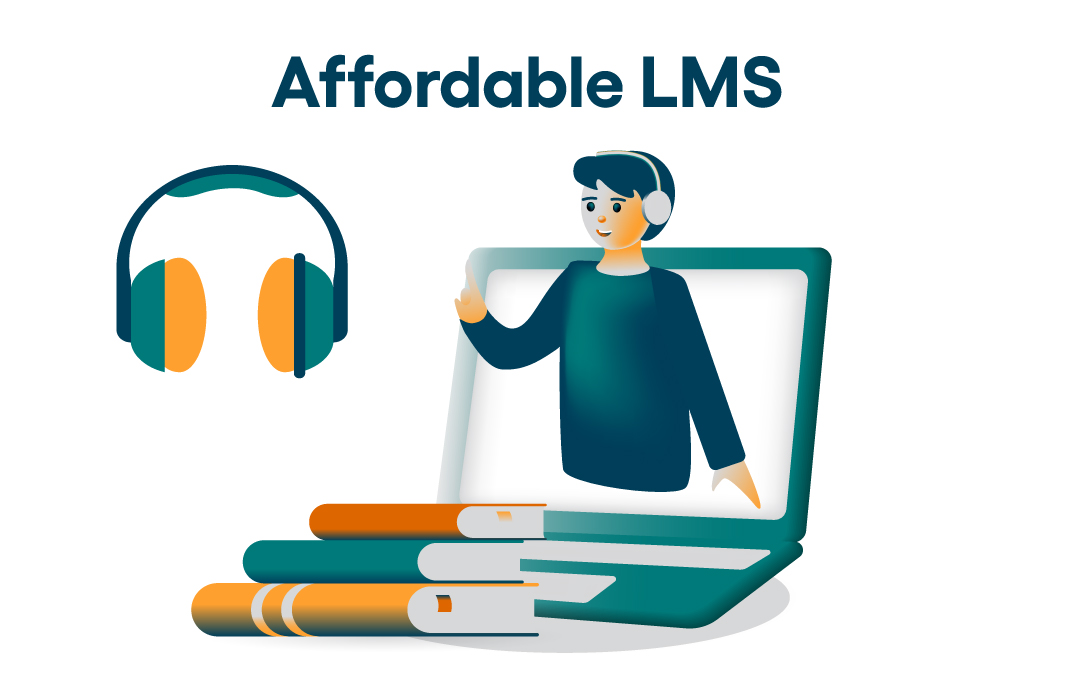Finding a budget-friendly learning management system (LMS) doesn’t mean sacrificing quality. Today’s affordable LMS platforms offer essential features like user-friendly interfaces, scalability, and customization—without the high price tag. There’s an LMS designed to fit the needs of everyone including small businesses, educational institutions, and independent course creators. Let’s explore the best value options.
Why Affordable LMS Solutions Matter
Effective training and education shouldn’t break the bank. Affordable LMS platforms make high-quality training accessible to organizations of all sizes. For small and medium-sized enterprises (SMEs), learning costs can be a significant obstacle. But an affordable LMS can support employee onboarding, upskilling, and compliance training without overwhelming budgets.
The value of an LMS goes beyond cost. These systems foster a culture of learning, which leads to higher employee engagement, better performance, and improved customer satisfaction. Course creators and educational institutions also benefit from cost-effective LMS platforms that enhance their training programs and provide learners with an engaging experience.
Choosing the right LMS ensures that your organization can seamlessly integrate e-learning without high operational costs. The key is finding a platform that balances affordability with essential features.
Key Features of an Affordable LMS
When selecting an LMS, consider more than just the initial price tag. Look for systems that offer essential features, including user-friendliness, scalability, customization, and robust customer support. Let’s break down why these features matter.

User-Friendly Interface
A user-friendly LMS simplifies the learning experience for both administrators and learners. A platform with a clean interface makes it easy to create, access, and manage courses. If an LMS is clunky or difficult to navigate, learners may disengage, and administrators could spend more time troubleshooting than training.
For example, TalentLMS is designed to be intuitive and easy to use, with minimal onboarding required. Similarly, Google Classroom integrates seamlessly with Google Workspace tools to enhance collaboration and make learning smooth for students and teachers alike.
An intuitive LMS also supports mobile learning by enabling users to access courses anytime, anywhere. Whether learners are on their computers or mobile devices, ease of access leads to better engagement.
Scalability and Flexibility
Your LMS should grow with your organization. Scalability allows the platform to accommodate an expanding number of users and course offerings. Whether you’re onboarding new employees or launching additional training programs, a scalable LMS prevents the need for costly migrations later.
iSpring Learn is a great example of an LMS that supports business growth. It offers flexible pricing plans and integrates well with existing systems. Additionally, features like gamification and mobile learning make the training experience more engaging.
Flexibility also includes the ability to tailor course content and adapt to different learning needs. Whether you’re an independent course creator or managing corporate training, a flexible LMS can help you meet your goals efficiently.
Customization Options
Customization helps reinforce your organization’s brand and creates a professional learning environment. White-labeling options allow you to use your own logo, custom domain, and branding within the platform.
Moodle, an open-source LMS, is known for its extensive customization capabilities. With plugins, themes, and branding options, Moodle can be tailored to suit various educational and business needs. However, it does require some technical expertise to make the most of these features.
For organizations without technical teams, affordable LMS options like Thinkific offer user-friendly customization tools that don’t require coding. Customization ensures that your LMS reflects your brand identity and creates a cohesive learning experience.

Hidden Costs to Avoid
A seemingly affordable LMS can become expensive when hidden fees add up. Transparent pricing is essential to avoid surprises. Consider the total cost of ownership, which includes setup fees, premium features, support costs, and potential upgrade expenses.
Custom LMS solutions may appear affordable at first but often come with unpredictable costs due to complexity and maintenance needs. Be sure to read the fine print when reviewing pricing structures. Some platforms charge extra for analytics, storage, or integration with external tools.
The key is to balance cost and quality. Opting for the cheapest platform might seem appealing, but sacrificing essential features could lead to ineffective training and long-term expenses. Instead, look for platforms that offer transparent pricing and a good mix of necessary features.
Top 7 Affordable LMS Solutions for 2025
Here’s a closer look at the top affordable LMS platforms that balance cost, features, and usability:
2. Moodle
Moodle’s open-source nature makes it highly customizable and free to use, although organizations must account for hosting and technical management costs. With a vast community of users and plugins, Moodle is ideal for those with technical expertise.
3. iSpring Learn
A user-friendly LMS for small and medium-sized businesses, iSpring Learn includes robust reporting tools and mobile-friendly course options. Its pricing starts at $3.66 per user per month, making it a great option for budget-conscious organizations.
4. LearnDash
As a WordPress plugin, LearnDash offers powerful course creation tools and monetization options for independent course creators. However, it requires ongoing maintenance, as users must manage WordPress updates and plugin compatibility. LearnDash products and pricing start at $199 per year.
5. Thinkific
Thinkific is perfect for entrepreneurs and educators. While it excels at course creation, it may not be as robust for enterprise-level employee training. Thinkific pricing plan start at $36/month.
6. Google Classroom
Ideal for educational institutions, Google Classroom is free for schools using Google Workspace for Education. It simplifies collaboration and communication, though it may not have the depth needed for complex corporate training.

7. Easy LMS
Easy LMS offers flat-fee pricing starting at $55/month, making it an affordable option for organizations that prioritize simplicity. Its streamlined interface supports efficient course delivery and tracking, though it lacks some advanced reporting features.
Choosing the Right Pricing Model
Understanding pricing models can help you choose the best LMS for your organization’s needs. Common pricing models include:
– Pay-per-Learner: Ideal for stable user bases, this model charges based on the number of learners.
– Pay-per-Active-User: Organizations are billed only for users who engage with the platform, making it cost-effective for fluctuating training needs.
– Subscription-Based: Fixed monthly or annual fees provide predictability.
– Free/Open-Source: No licensing fees, though costs for hosting and maintenance may apply.
Choosing the right model depends on your budget and training goals. Free trials can also help you assess whether an LMS meets your needs before committing.
Tips for Maximizing LMS Value
Maximizing the value of your LMS requires a strategic approach to implementation and ongoing use. Here are some actionable steps to help you get the most out of your platform:
– Leverage Free Trials: Take advantage of free trials to explore features and interface usability.
– Use Customer Support: Reliable support can make or break your experience with an LMS. Ensure your chosen platform offers responsive assistance.
– Customize for Branding: Personalize the platform to reflect your organization’s branding for a cohesive user experience.
– Monitor Performance: Use analytics to track learner progress and identify areas for improvement.
By following these tips, you can ensure that your LMS investment enhances your training initiatives and delivers measurable results.

The Bottom Line
Affordable LMS platforms empower organizations to provide high-quality training without overspending. By focusing on user-friendly interfaces, scalability, and transparent pricing, you can find a solution that supports your learning goals and budget.
Whether you choose TalentLMS for its simplicity, Moodle for its flexibility, or Thinkific for course creation, the key is to select an LMS that aligns with your needs. Effective training drives growth and builds a stronger, more informed team.
Frequently Asked Questions
What are the benefits of using an affordable LMS?
Affordable LMS platforms allow organizations to deliver impactful training while staying within budget.
What features should I look for in an affordable LMS?
Prioritize user-friendly interfaces, scalability, customization, and reliable support to ensure your LMS meets your needs.
What are some hidden costs to watch for?
Hidden costs may include fees for premium features, extra storage, customizations, and additional support.
Which LMS platforms are considered affordable for 2025?
TalentLMS, Moodle, iSpring Learn, LearnDash, Thinkific, Google Classroom, and Easy LMS are all affordable and feature-rich options.
How can I maximize the value of an affordable LMS?
Use free trials, take advantage of customization, and rely on customer support to ensure you get the most out of your LMS investment.
Spotlightr Video Hosting For Your Course
Discover why Spotlightr is the #1 choice for course creators and e-learning professionals.
Register for a free 2 week trial, no credit card required.

